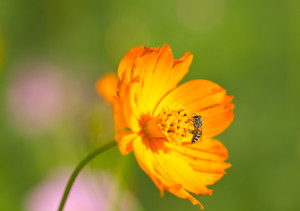 When you’re dreaming up the ideal landscape, why should you choose plants native to the Austin area? Simply put, regional plants sing in a glorious harmony of colors that turn your business or residential property into an eye-catching dreamscape, and they do this with a minimal amount of water and work. In our particular climate and weather conditions, regional plants thrive where non-resident plants, even with constant attention and nurturing, struggle to survive.
When you’re dreaming up the ideal landscape, why should you choose plants native to the Austin area? Simply put, regional plants sing in a glorious harmony of colors that turn your business or residential property into an eye-catching dreamscape, and they do this with a minimal amount of water and work. In our particular climate and weather conditions, regional plants thrive where non-resident plants, even with constant attention and nurturing, struggle to survive.
If you’re stymied trying to decide on the regional plants to use in beautifying your landscape, the Native Plant Society of Texas and the Texas AgriLife Extension have substantial lists of native plants. We’ve assembled a list containing a few of our favorites for you.
Mistflower
In colorful landscaping schemes, mistflower graces your property with two Bs: blooms and butterflies. Clusters of fuzzy blooms top clumps of four-foot stems with leaves of one to three inches. The blooms, in both lavender and white varieties, attract practically every butterfly known to reside in Texas.
The easy-growing plant flourishes in conditions from full sun to dappled shade, and it requires very little water. In drought conditions, however, it does like a sip or two of hydration. As a local plant, it doesn’t require soil with decent drainage. Mistflower does appear to die and fall to the ground during cold winters, but it pops right back up again every spring to enact its stellar performance once again.
Honey Daisy
The honey daisy, also called the cowpen daisy, is a rarity: a native wildflower you can rely upon to bloom year after year. These flowers do very well in disturbed soil, so they are an excellent choice in areas with high traffic. If they can stand up to grazing cows, they can stand up to pedestrians.
Honey daisies infuse your land with a chorus of vibrant yellow that displays from summer straight through to first frost. When you incorporate these daisies into your landscape, you enjoy profuse color during the time of year that most plants have given in to heat exhaustion. Because so few nectar-producing plants last until this time of year, pollinators and butterflies adore the honey daisy.
Texas Clematis
The Texas clematis also goes by the names scarlet leatherflower, scarlet clematis and clematis texensis. Regardless of what you call it, people prize this hardy vine for its beautiful scarlet blooms that are shaped like bells. If you plant Texas clematis so it receives a half-day of sun, it happily survives and flourishes even in drought conditions. Under the right conditions, this plant will bloom right up to the first frost of the year.
Texas is the native land to so many gorgeous plants that only a few can receive mention in a humble blog; we’d have to write a book to describe them all. If you’re unsure how to begin landscaping with plants native to Austin, call us at ABC Home & Commercial Services in Austin. We’ll help you find the first notes that will encourage your landscape to sing.